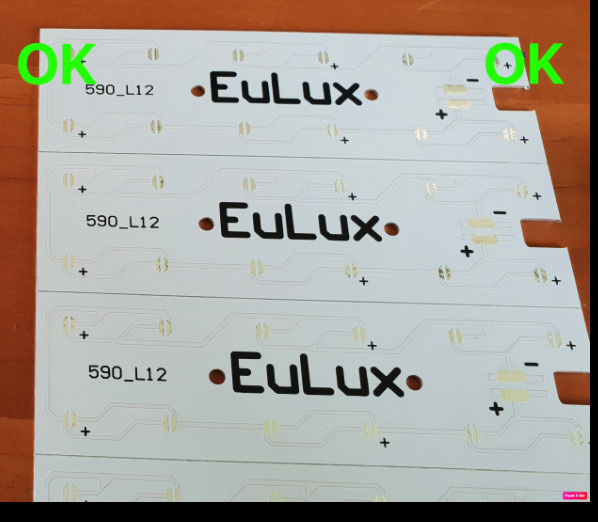
Support Team
Feedback:
support@nextpcb.comAluminum substrates have excellent electrical properties, heat dissipation capabilities, electromagnetic shielding, high dielectric strength, and bending resistance, and are widely used in high-power LED lighting, power supplies, TV backlights, automobiles, computers and many other industries, air conditioning inverter modules, avionics, Telecommunications, medical, audio, etc. When it comes to the most commonly used mobile phone cameras, the aluminum PCB is an important part of the mobile phone. As a metal core PCB (MCPCB), aluminum PCB has many similarities with FR4 PCB in terms of manufacturing process or technology, such as thick copper foil etching, aluminum surface etching protection, aluminum plate manufacturing, and solder mask printing.

Since the 1970s, aluminum PCBs have become popular since they were first used in power amplifier hybrid integrated circuits (integrated circuits). In recent years, due to the development of the LED industry, the application and development trend of aluminum PCBs have become increasingly widespread. Therefore, it is necessary to understand some important characteristics of aluminum PCBs in order to make better use of them in your product or industry.

In terms of aluminum PCB structure, it truly shows that the structure of aluminum copper clad laminate (CCL) is composed of copper foil, dielectric layer, aluminum base, and aluminum base film (optional). The structure of aluminum CCL is shown below.
Aluminum CCL has the same copper foil layer as ordinary CCL, and the circuit layer needs a large current carrying capacity. This is the reason for choosing a thicker copper circuit from 1 ounce to 10 ounces. The back of the copper foil must be chemically oxidized, and the surface should be zinc-plated and brass-plated to improve the peel strength.
The dielectric layer is composed of a layer of thermally conductive dielectric material with low thermal resistance and a thickness of 50μm to 200μm. It is the core technology of aluminum CCL. It is excellent in resistance to thermal aging and can withstand mechanical and thermal stress.
The aluminum base layer is actually an aluminum base plate material, which is the supporting component of the aluminum base layer. It needs to have high thermal conductivity and is suitable for ordinary machine manufacturing, such as drilling, punching and cutting.
The aluminum base film serves to protect the aluminum surface from scratches and etching agents. The membrane can be divided into ordinary (below 120°C) and high-temperature resistant (250°C). The latter type meets the requirements of HASL (Hot Air Solder Leveling) as the surface finish.
Compared with ordinary FR4 PCBs, aluminum PCBs perform better in terms of heat dissipation and can quickly dissipate heat. Compare FR4 PCB and aluminum PCB, the equivalent thickness is 1.5mm as an example. The thermal resistance of FR4 PCB is 20°C/W to 22°C/W, while the thermal resistance of aluminum PCB is 1°C/W to 2°C/W. Therefore, aluminum can dissipate heat well.
Thermal expansion and contraction are common characteristics of substances, and different substances have different coefficients of thermal expansion. Now, aluminum PCBs are excellent in heat dissipation. Therefore, the durability and reliability of the entire device and electronic devices can significantly reduce the thermal expansion and contraction of components on the board surface. This advantage of aluminum PCB is particularly suitable for the thermal expansion and shrinkage of SMT (surface mount technology).
The aluminum-based PCB has a significantly stable size. When they are heated from 30°C to 140°C or 150°C, their size changes only 2.5% to 3.0%.
a. Suitable for power device SMT.
b. Effective circuit design thermal expansion.
c. It helps to reduce the working temperature, improve the power density and reliability of the product, and extend the shelf life of the product.
d. Reduce the size of the product, reduce the cost of hardware and assembly.
e. Replace the fragile ceramic substrate with better insulation performance and mechanical durability.
According to the application type and dielectric layer material, aluminum PCB can be divided into three categories:
Whether it is a single-layer, double-layer or multilayer aluminum PCB, or MCPCB, they have many similarities in the manufacturing process of FR4 PCB. Nevertheless, as an advanced PCB, aluminum PCB still has special aspects of the manufacturing process and requires strict and effective management and control.
Aluminum PCB is usually used in power devices with high power density, so the copper foil is relatively thick. When the thickness of the copper foil is 3 ounces or more, copper foil etching requires trace width compensation. Otherwise, the trace width after etching will exceed the tolerance. Therefore, in order to ensure the best trace width/spacing and impedance control that can meet the design requirements, the following tasks must be completed in advance. The trace width compensation should be appropriately designed.
b. The influence of trace manufacturing on trace width/spacing should be eliminated.
c. The etching factor and reagent parameters should be strictly controlled.
Solder mask printing is regarded as a manufacturing problem. Due to the influence of thick copper foil, if the thickness of trace copper in aluminum PCB manufacturing is abnormal after the image is etched, there will be a big difference between the trace surface and the substrate, and the solder mask Will become difficult. To ensure smooth solder mask printing, the following principles should be followed:
a. High-quality performance should be used to obtain solder mask oil.
b. Use two solder mask printing.
c. When necessary, first rely on resin filling and solder mask manufacturing methods.
Mechanically manufactured aluminum PCBs include mechanical drilling, milling, and molding. V-notches and burrs tend to stay on the internal through holes, which will reduce the electrical strength. Therefore, in order to ensure high-quality mechanical manufacturing, the following principles should be followed:
a. Electric milling and professional milling cutters should be used for small batch production.
b. Attention should be paid to the control technique and pattern during the mold forming process.
c. Drilling parameters should be properly adjusted on thick copper-aluminum PCBs to prevent burrs.
Still, need help? Contact Us: support@nextpcb.com
Need a PCB or PCBA quote? Quote now